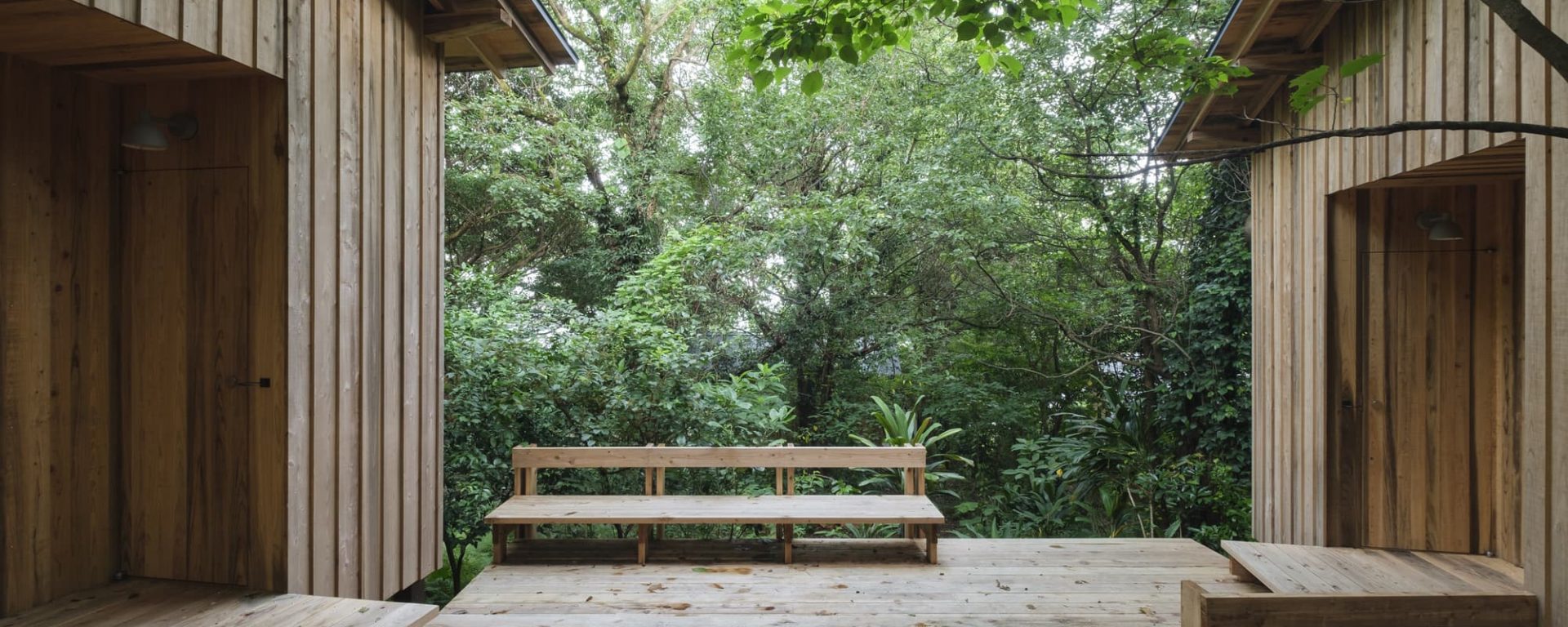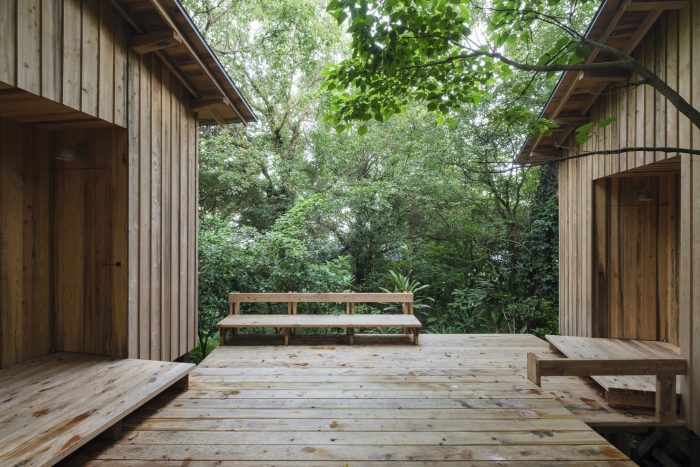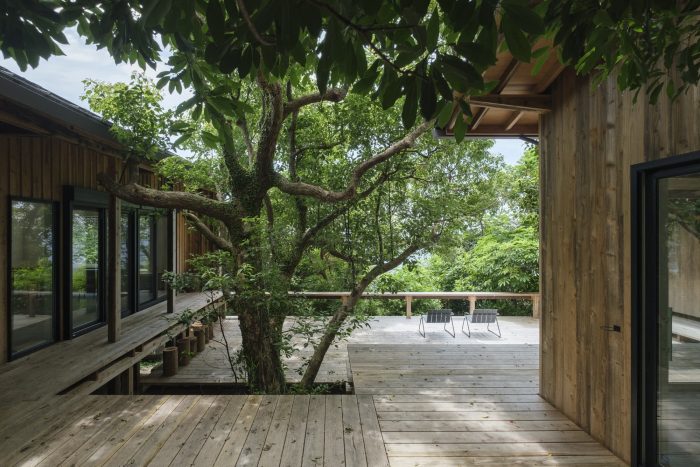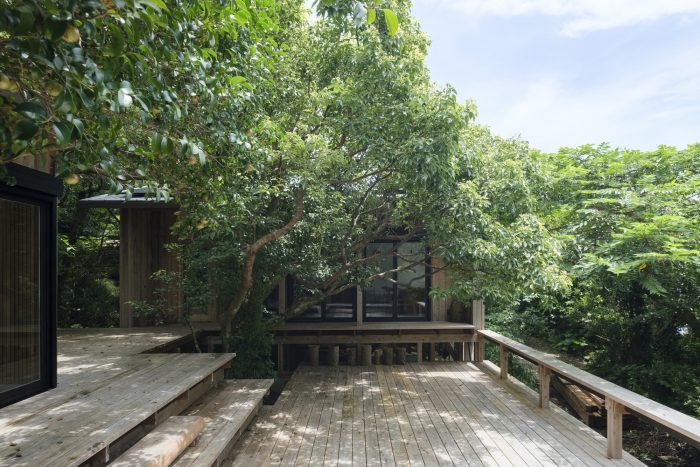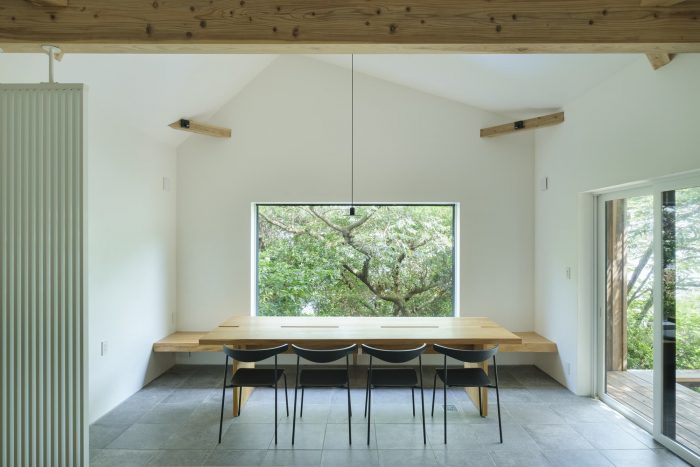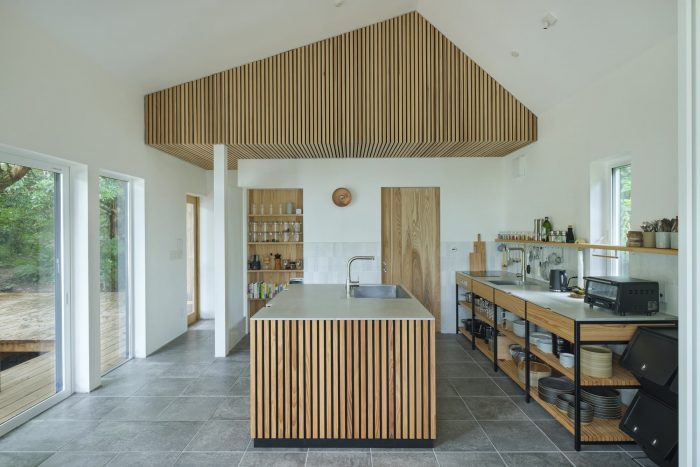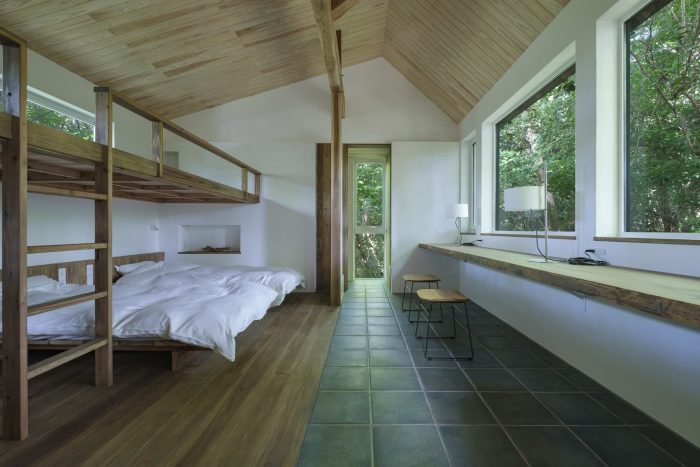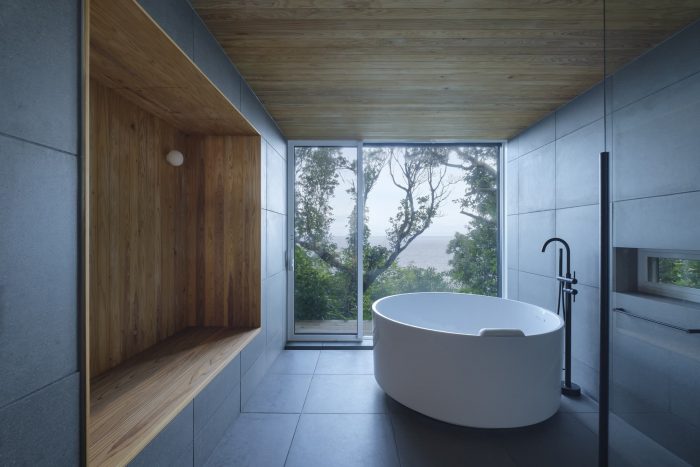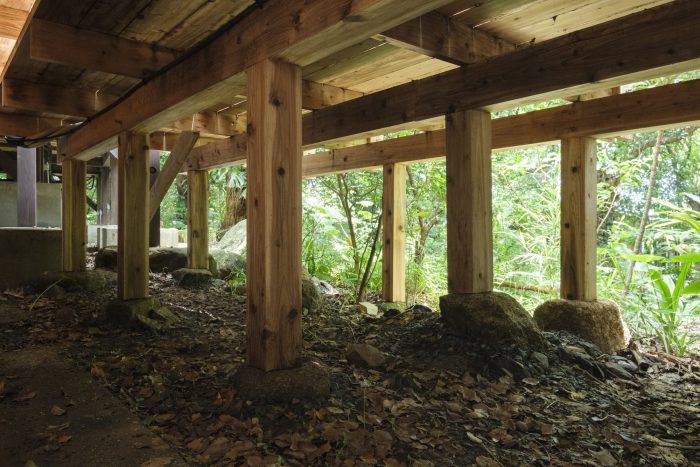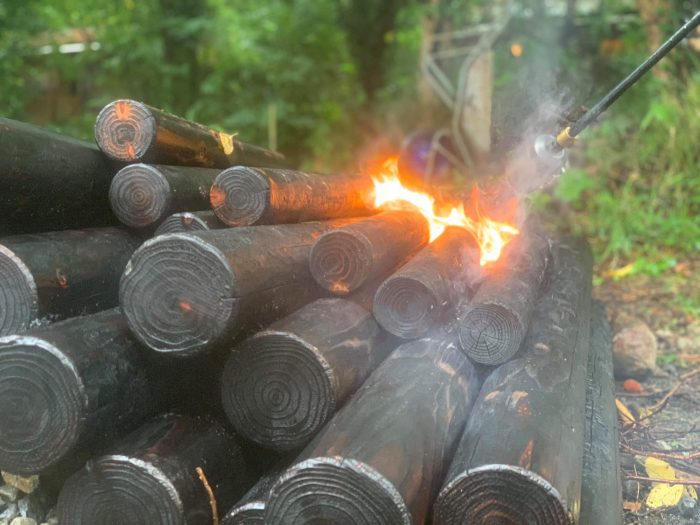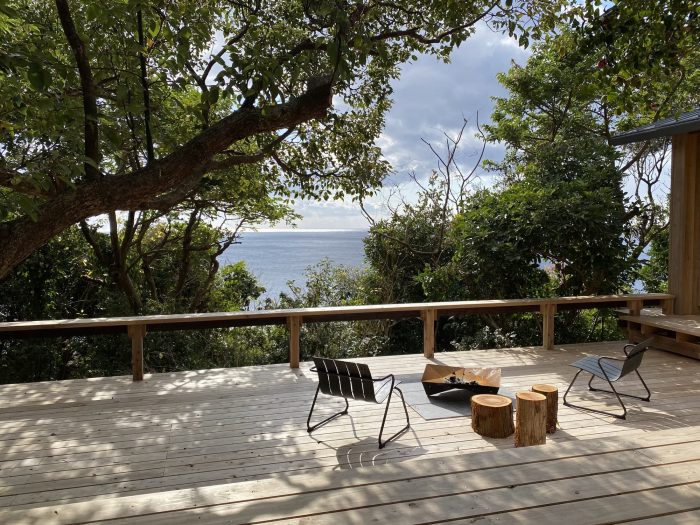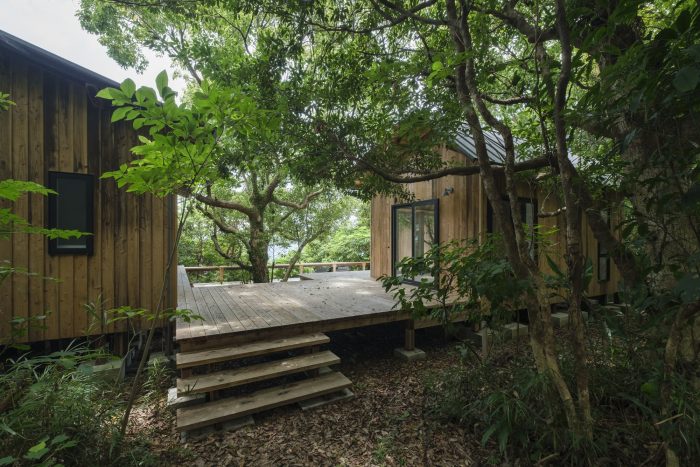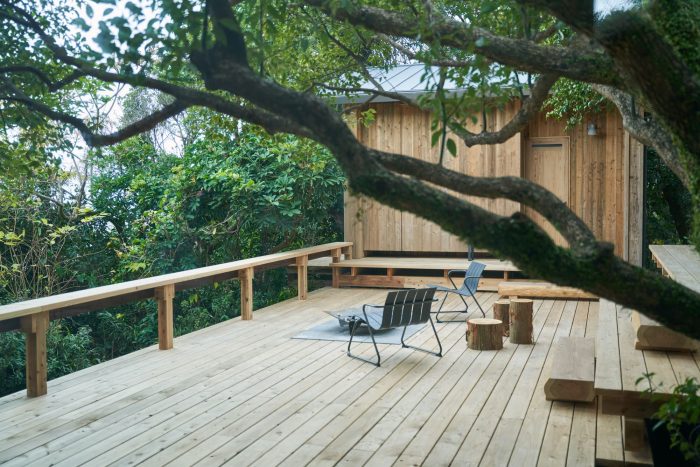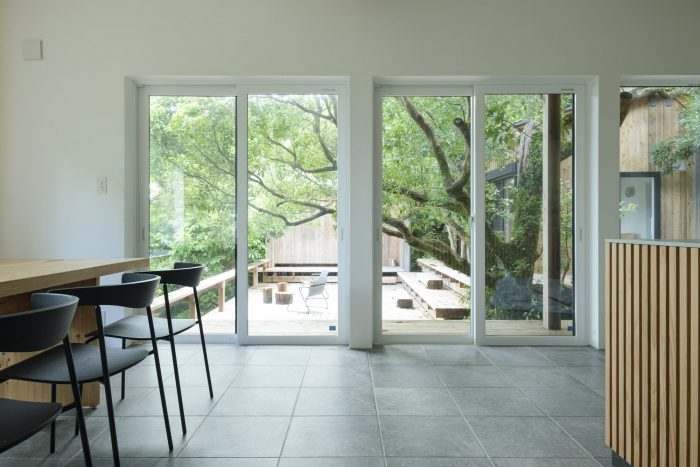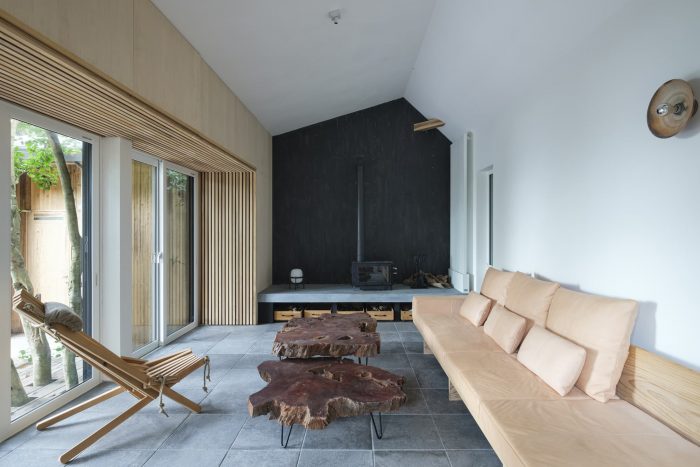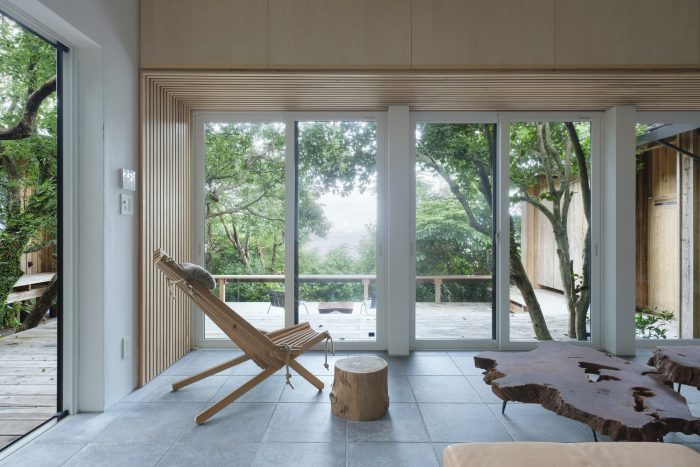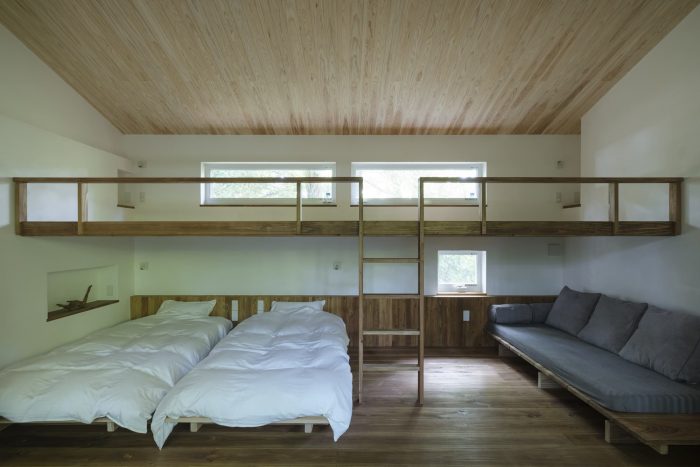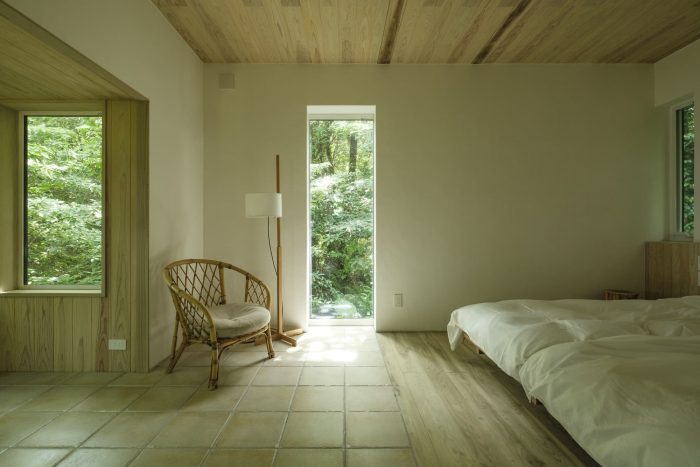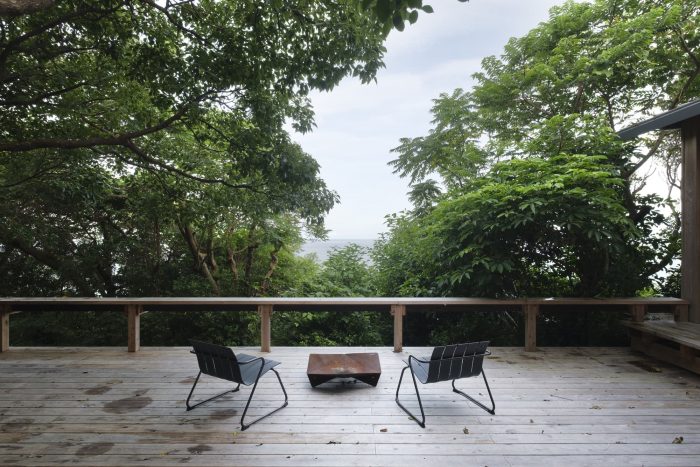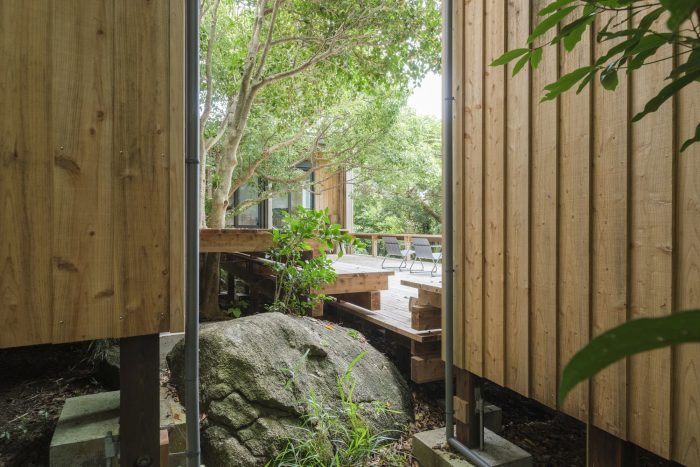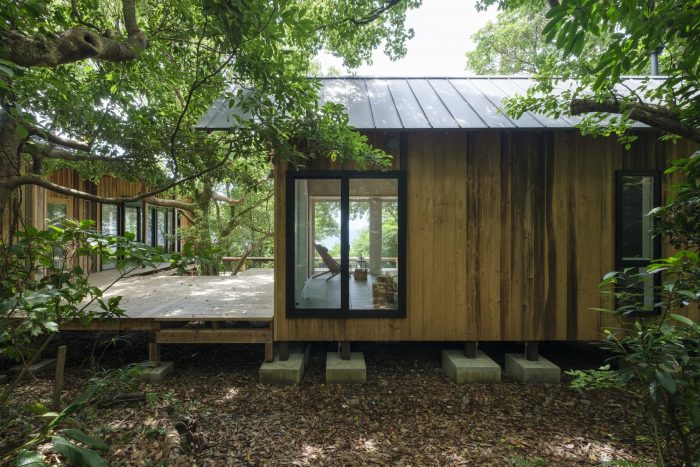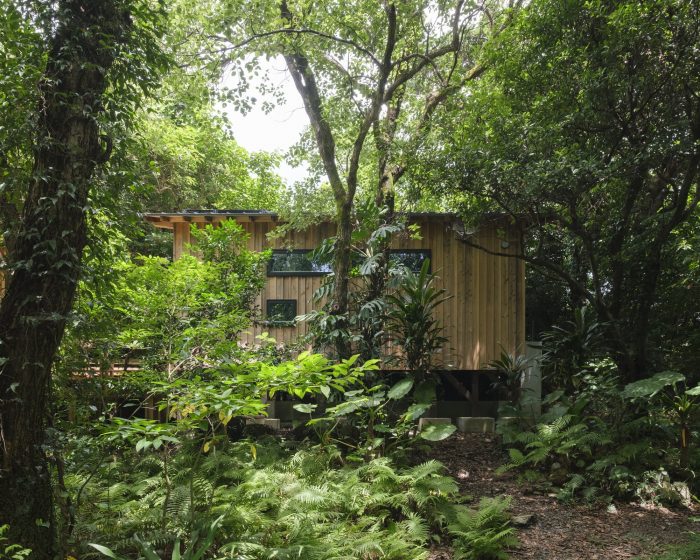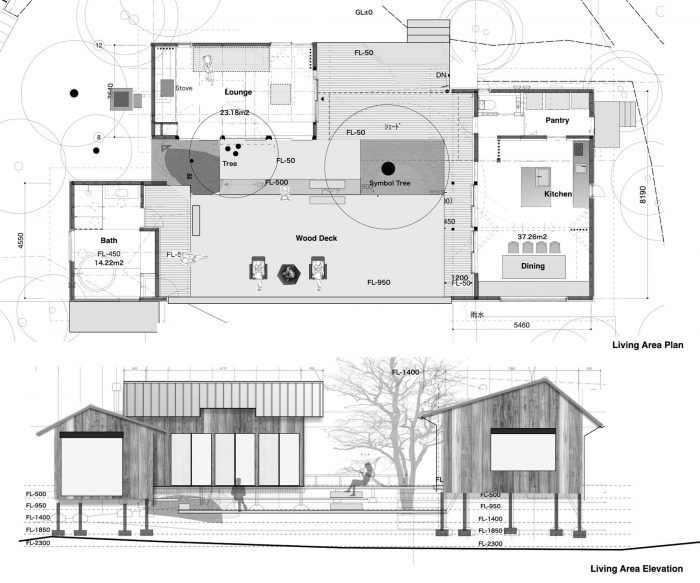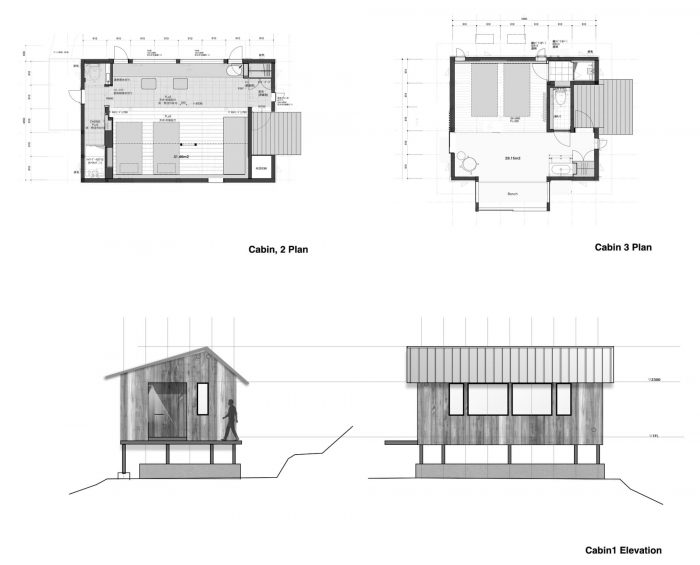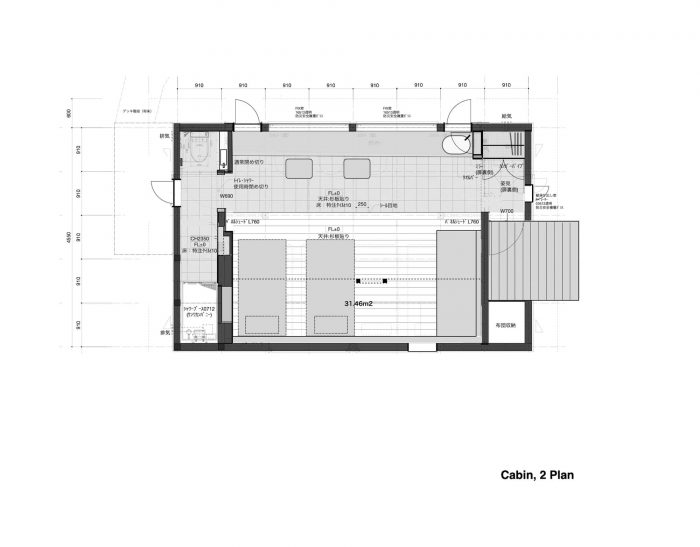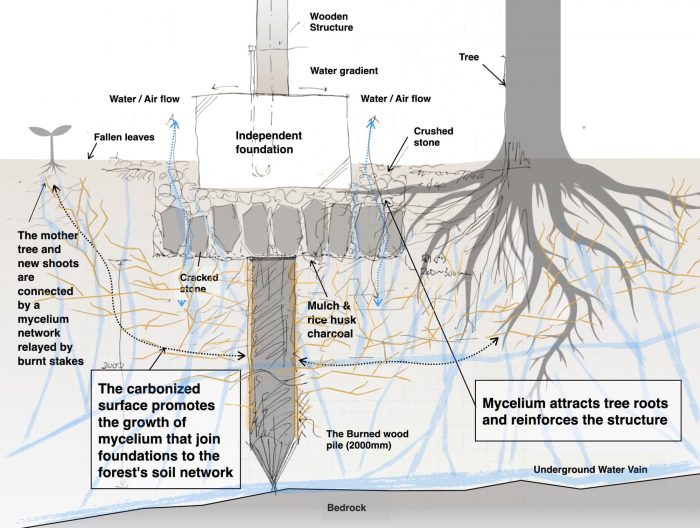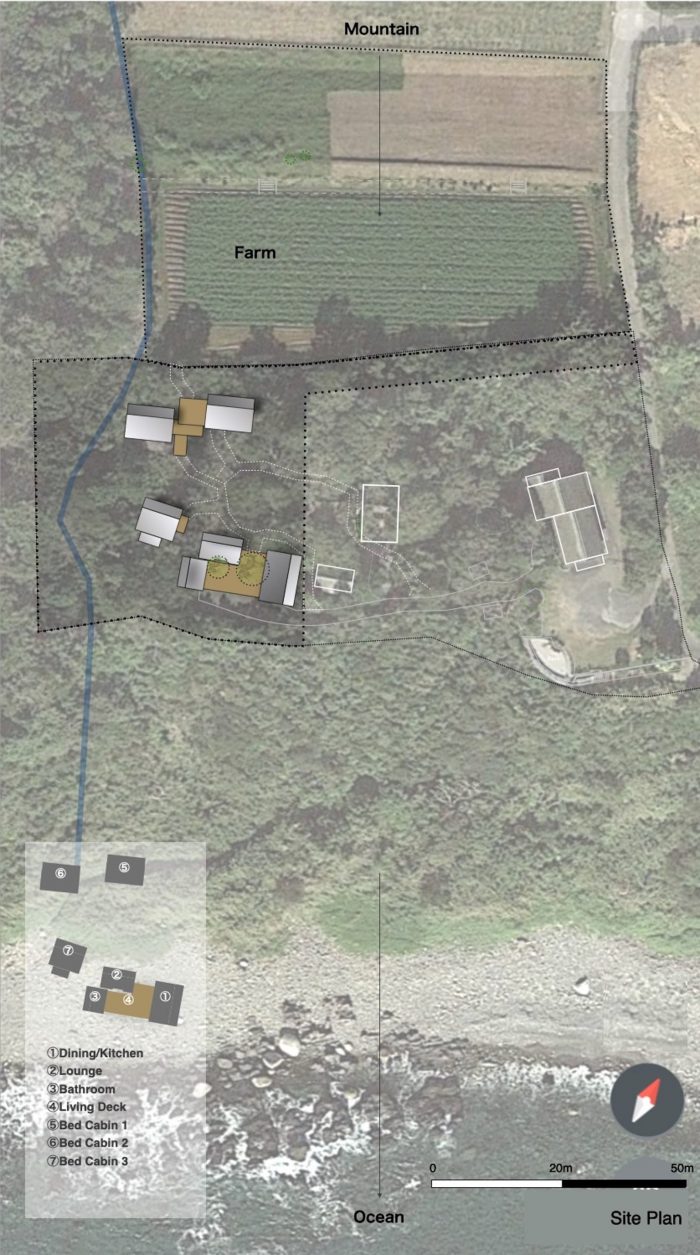屋久岛是日本南部的一个自然天堂,2000米高的山峰上丰富的降水孕育了茂密的森林,这里有千年的日本雪松。这个创新的住房合作社应用 “再生建筑 “来重新概念化人类居住和这个大自然之间的关系。Sumu这个名字既有 “生活 “的意思,也有 “变得清晰 “的意思,表达了它的核心概念,即以一种积极影响景观的方式生活。
Yakushima Island is a natural paradise in southern Japan where abundant rainfall on 2,000-meter peaks nurtures dense forests home to millennium-old Japanese cedar. This innovative housing co-op applies “regenerative architecture” to reconceptualize the relationship between human habitation and this nature. The name Sumu means both “to live” and “to become clear,” expressing its core concept of living in a way that positively impacts the landscape.
该设计不是一个离散的场地,而是从整个流域的整体角度出发,从山到海,对自然过程做出积极贡献。苏木是一个由八个业主共同创建的实验性住房合作社。它供业主和值得信赖的朋友使用,是一个照顾自然同时反思价值的地方。它采用了 “再生建筑”,这是一种由设计师开发的新方法,将传统的日本土木工程与当代技术相结合。
Rather than being a discrete site, the design takes a holistic view of the entire river basin, from the mountains to the sea, making a positive contribution to natural processes. Sumu is an experimental housing co-op jointly created by eight owners. Made for use by owners and trusted friends, it is a place for tending to nature while reflecting on values. It applies “regenerative architecture,” a new approach developed by designers that combine traditional Japanese civil engineering with contemporary technology.
不仅仅是简单地保护今天的自然,设计中的关键考虑因素是。
设计地下环境
根据对景观中水和空气流动的深入理解确定建筑物的方向
通过建筑创造一个与自然的持续联系
Going beyond simply preserving nature as it is today, key considerations in the design are:
Designing the underground environment
Orientating buildings based on an in-depth understanding of water and air flow through the landscape
Creating an ongoing connection with nature through architecture
依偎在绿意盎然的屋久岛的原始森林中,Sumu在不砍伐大树或平整地面的情况下适应了周围的景观。设计师在设计每一个元素时,都考虑到了它与自然的接近,从小木屋到屋顶和甲板。
Nestled amidst virgin forest on greenery-rich Yakushima, Sumu was adapted to fit the surrounding landscape without cutting down large trees or leveling the ground. The designers crafted every element with its proximity to nature in mind, from the cabins to the roofs and decks.
内部装修是当地木材和石膏的简单组合,漂亮地框住了森林和海岸线,通过让居民从一个受保护的空间欣赏大自然,促进了与大自然更深的联系。私人小木屋和公共设施是独立的建筑,由室外路径连接,将穿过森林的散步纳入日常活动,不断唤起与自然和谐相处的感觉。抬高的地板促进了从山上到海里的自然气流,这也避免了地板下多余的水分积累。
The interiors are a simple combination of local wood and plaster that beautifully frame the forest and coastline, fostering deeper connections with nature by allowing residents to admire it from a protected space. Private cabins and communal facilities are separate buildings connected by outdoor paths, incorporating walks through the forest into daily activities to constantly evoke the sensation of life in harmony with nature. Raised floors promote the natural airflow from the hills to the sea, which also avoids excess moisture accumulation under the floors.
该设计还延伸到地下。燃烧的木材被放置在每个建筑的地基下,碳化的表面促进了菌丝(真菌线)的生长,使其加入到森林的土壤网络中。菌丝体促进了建筑物下的树根生长,加强了土壤。苏木开发了一种被称为 “再生建筑 “的新方法,建筑由此丰富了自然。除了探索日本传统智慧的现代应用外,其特点还包括。
来自太阳能、蓄电池和当地木柴的100%离网能源
舒适的生活空间,利用建筑专业技术实现有效的气密性和绝缘性,与营地式住宿不同。
The design also extends underground. Burned wood is placed under the foundations of each building, and the carbonized surface promotes the growth of mycelium (fungal threads) that join them in the forest’s soil network. The mycelium fosters tree root growth under buildings, strengthening the soil. Sumu has developed a new methodology called “regenerative architecture,” whereby the buildings enrich nature. In addition to exploring modern applications of traditional Japanese wisdom, its features include:
100% off-grid energy from solar power, storage batteries, and local firewood
Comfortable living spaces that leverage architectural expertise to achieve effective airtightness and insulation unlike camp-style accommodation
Sumu的设计改变了我们与自然的关系。它使居民能够发现与自然互动的新的可能性,并调整他们的思维和行为方式,与自然建立超越世代的关系。它的独特方法如果得到更广泛的应用,有可能加速环境倡议。
Sumu’s design changes our relationship with nature. It enables residents to discover new possibilities for interacting with nature and adapt the way they think and act, building relationships with nature that transcend generations. Its unique approach has the potential to accelerate environmental initiatives if more widely applied.
Architects: tono Inc.
Area : 162 m²
Year : 2022
Manufacturers : Sanyou Seisakusho, YKK AP, channel original
Lead Architect : Tsukasa Ono
Environmental Consultants : Moss Guide Club
Energy Consultants : ENERGY MACHIZUKURI-SHA INC.
Landscape Consultants : WAKUWORKS, Tomonari Waku
Lighting Designers : Hisaki Kato Lighting & Design Inc.
Environmental Consultant : Yuki Imamura
Energy Consultant : Masayoshi Takeuchi
Lighting Designer : Hisaki Kato
Furniture Design Collaborator : Ben Nagaoka
Furniture Design : POINT Inc.
City : Yakushima
Country : Japan

